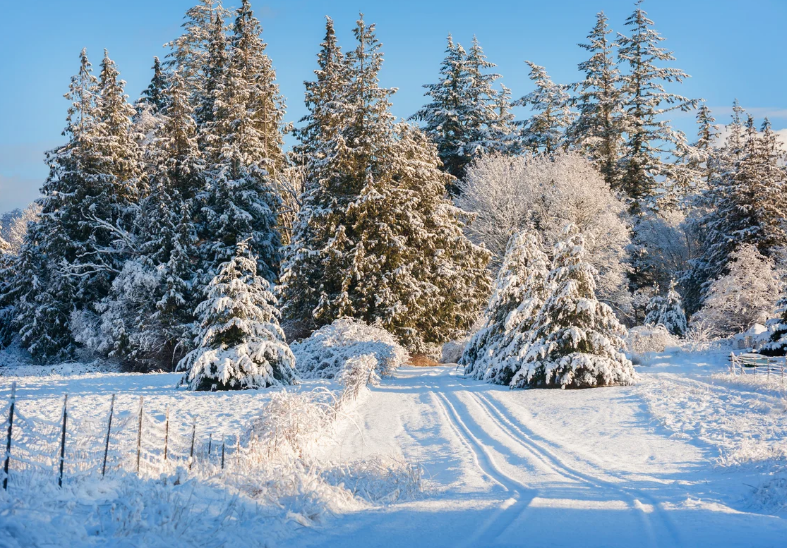Context:
The India Meteorological Department (IMD) has issued a forecast indicating the likelihood of a cold wave affecting portions of North India.
Cold Waves:
A cold wave is defined as a rapid and significant drop in temperature over a specific geographic area, accompanied by chilly conditions and often characterized by cold and dry air masses.
The India Meteorological Department (IMD) uses certain criteria to declare the onset of a cold wave. The criteria typically include temperature thresholds and duration.
Cold Days Criteria of IMD:
Temperature Thresholds:
- Plains: Cold day declared when the minimum temperature of a station is below 10°C.
- Hilly Regions: Cold days are declared when the minimum temperature of a station is below 0°C.
Departure-based Criteria:
- Cold Day: Maximum temperature departure from normal is between -4.5°C to -6.4°C.
- Severe Cold Day: Maximum temperature departure from normal is greater than -6.5°C.
Actual Minimum Temperature Criteria (for Plains only):
- Cold Wave: Declared when the minimum temperature is below 4°C.
- Severe Cold Wave: Declared when the minimum temperature is below 2°C.
Coastal Stations:
- Cold wave declared for coastal stations when the minimum temperature departure is below -4.5°C or when the actual minimum temperature is below 15°C.
Causes behind Cold Waves:
1. High-Pressure Systems:
- The presence of high-pressure systems can lead to the subsidence of air, resulting in the adiabatic compression of air, leading to warming at higher altitudes and cooling at the surface.
2. Incursion of Cold Air Masses:
- During certain weather patterns, cold air masses from polar regions or high-altitude areas move southward, invading regions that are not accustomed to such low temperatures.
3. Clear Skies and Radiational Cooling:
- Clear skies during winter nights allow the Earth’s surface to radiate heat rapidly into space. This radiational cooling effect leads to a significant drop in temperatures.
4. Geographical Features:
- The local geographical features, such as mountains and valleys, can influence the movement and trapping of cold air, intensifying the cold wave effect.
5. Seasonal Changes:
- Seasonal transitions, such as the withdrawal of the monsoon, can set the stage for the establishment of cold wave conditions.
Impact:
1. Health Issues:
- The increased prevalence of respiratory diseases during cold waves puts additional stress on healthcare facilities.
- Vulnerable populations in urban slums often face challenges in accessing healthcare services during extreme weather conditions.
2. Agricultural Impact:
- Cold waves can result in “black frost,” damaging crops by freezing the water content in plant cells.
- Fruit-bearing crops such as citrus fruits, which are sensitive to cold, can suffer significant losses.
3. Energy Consumption:
- Cold waves lead to a surge in energy consumption as households and industries increase heating requirements.
- This increased demand can strain power grids, leading to localized power outages.
4. Livestock:
- Livestock, particularly in the northern regions, face challenges such as frostbite and scarcity of fodder during extended cold periods.
Government Measures:
1. Technology Adoption to Predict Effectively:
- The government invests in modern technology, including satellite imagery and advanced weather models, to enhance the accuracy of cold wave predictions.
- Automated weather stations are deployed to provide real-time data for better decision-making.
2. Social Welfare Programs:
- Schemes are implemented to ensure that homeless individuals have access to shelter during extreme cold conditions.
3. Agro-Advisories:
- The government issues agro-advisories based on weather forecasts to guide farmers on protective measures for crops during cold waves.
- Agricultural extension services play a key role in disseminating this information at the grassroots level.
Control Measures:
1. Emergency Healthcare Services:
- Emergency medical services are bolstered during cold waves, with additional healthcare staff deployed in affected areas.
- Mobile medical units are set up to reach remote regions where healthcare facilities may be limited.
2. Transportation Management:
- Authorities implement traffic management measures, including speed restrictions and advisories, to prevent accidents on icy roads.
- Public transportation services are strengthened to ensure the safe movement of people during adverse weather conditions.
Way Forward:
1. Research and Development:
- Continued research into climate patterns and their impact on cold waves is essential for developing more accurate prediction models.
- Investment in climate-resilient agricultural practices can help mitigate the impact on crops.
2. Green Infrastructure:
- Urban planning includes the development of green spaces and tree cover, which can act as natural buffers against extreme temperatures.
- Green infrastructure also contributes to reducing the urban heat island effect.
3. International Collaboration:
- Collaborative efforts with neighbouring countries and international organizations can enhance the exchange of knowledge and resources for managing and mitigating the impact of cold waves.
4. Community Engagement:
- Community-based disaster preparedness programs are crucial, emphasizing the importance of community involvement in developing and implementing response plans.
- Training programs can educate communities on first aid, emergency response and the establishment of community-led shelters.
Addressing the challenges posed by cold waves in India requires a comprehensive and multi-faceted approach. The incorporation of technological advancements targeted social welfare programs, and community engagement are pivotal for building resilience.

